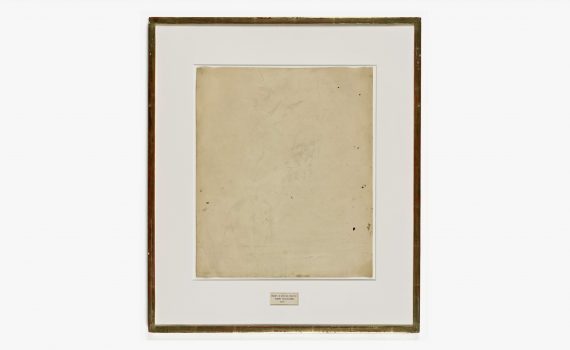Erased De Kooning Drawing Meaning. However, over time, the reputation of the erased de kooning drawing and that of rauschenberg himself skyrocketed with works such as his estate, (above) from 1963. The work was for the express purpose of erasing it as an artistic statement.

Although far from a completed drawing this enhancement allows us to see the marks that de kooning made. Through the erasure of de kooning’s drawing, rauschenberg acknowledged his admiration for his predecessor, but also signaled a movement away from abstract expressionism. The piece of paper once contained a drawing by the then already established artist willem de kooning, but this drawing was erased by rauschenberg.
The Original Ecce Homo Painting Was Erased Through The Addition Of Painted Marks With The Intention (Albeit Misplaced) Of Restoring The Artwork, While Erased De Kooning Drawing Involves The Systematic Removal Of Material As An Artistic Device:
Erased de kooning drawing, the art object, has a conservation history to it, but my primary focus here is the infrared scanning produced in 2013 as part of the rauschenberg research project undertaken by sfmoma. His favorite artist was william de kooning, a successful and inspirational artist. The 2013 infrared scan is not the first time erased has encountered the conservator's eye.
In 1953 Robert Rauschenberg Visited Willem De Kooning's Loft, Requesting One Of De Kooning's Drawings To Completely Erase It.
Did you read the stuff underneath the picture? Visitors to the museum who are familiar with its fascinating backstory look for it in the galleries with a similar eagerness. In 1953 robert rauschenberg, a young, little known artist, took a box of erasers and set to rubbing out a densely layered drawing by willem de kooning, the king of abstract expressionism, and he did it with the master’s permission.
With Erased De Kooning Drawing (1953), Rauschenberg Set Out To Discover Whether An Artwork Could Be Produced Entirely Through Erasure—An Act Focused On The Removal Of Marks Rather Than Their Accumulation.
At that time willem de kooning was the figurehead of the abstract expressionist movement and highly regarded by rauschenberg. Through the conservation efforts, the reverse of the de. He realised that he needed to erase the work of an important artist.
Erased De Kooning Drawing Isn’t Much To Look At, But When We Ship It To Other Museums For Exhibitions, Their Staff Members Flock Around With Anticipation To See The Fabled Work Emerge From Its Crate.
If you're behind a web filter,. The work was for the express purpose of erasing it as an artistic statement. He was dissatisfied with the results.
51 In 1968, Harold Rosenberg Referred To Erased De Kooning Drawing As “The Most Significant Creative.
“robert rauschenberg”:erased de kooning robert rauschenberg was trying to figure out a way to bring drawings in to the all white series. Innovative with his technique and inspired by his fascination with what art truly encompasses, one of rauschenberg’s most notable works is his erased de kooning drawing that read more Robert rauschenberg, erased de kooning drawing.